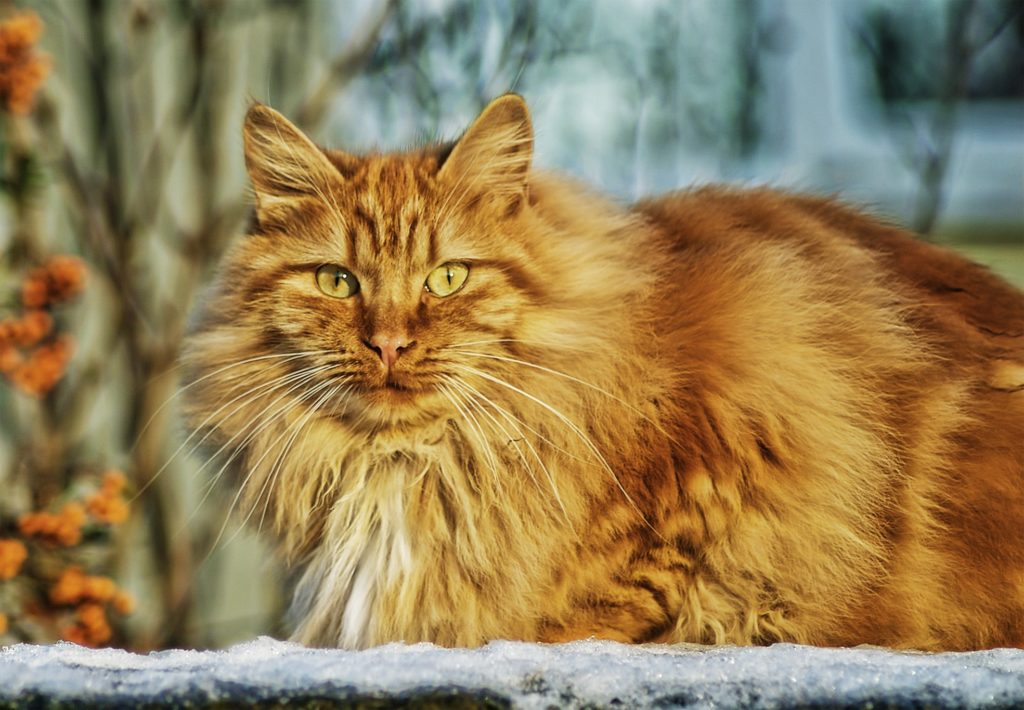Protein’s good. Protein’s bad. Too much is a bad thing. Too little is a good thing. With all the chatter out there about the role of protein in pet food, it’s no wonder owners are more confused than ever. So what gives? How important is protein, exactly?
To review: there are three sources of energy in a food: carbohydrates, fats, and proteins. Cats are unique in that they are obligate carnivores: their bodies are designed to be able to get all of their nutritional needs from a meat-based diet. Their digestive tracts are optimized to use proteins as a source of fuel in a very efficient manner.
Dogs, on the other hand, are omnivores. They are adapted to digest a wide variety of both meats and plant materials to obtain their fuel. If you look at the diet of their relatives, the wolf and the coyote, you’ll see that they eat not only muscle and bones but plant material, fruits, and viscera containing forage. As anyone with a dog will attest, they are scavengers.
In addition being a source of energy, proteins are the basic building blocks of the body. The body breaks the large protein molecules down into component amino acids, which can then be reassembled into connective tissue, cell membranes, fur, skin, hormones, enzymes, and other goodies.
Muscles are, of course, also reliant on protein. Muscle tissue is not static–the component amino acids are in a constant state of turnover, so protein is essential not only to create muscle, but to maintain it.
So how to we ensure proper protein intake? Well, as you might imagine for kitty carnivores, their daily protein requirement is higher than it is for other animals like the dog. AAFCO, an organization that sets nutritional guidelines for the pet food industry, recommends that protein comprise a minimum of 26% of the dry weight of the food for adult cats, and 30% for growing felines.
Dogs are a different story. Commercial dog foods vary widely in terms of their protein content, a reflection of the fact that different dogs have very different needs. AAFCO recommends that protein comprise a minimum of 18% of the dry weight of the food for adult dogs, and 22% for growing pups. If you read bag labels, and you should, you can see this number can vary from the 18% range up to 50%, and higher.
But it’s not only the amount of protein that matters, it’s the quality of the protein. Protein can be derived from animal sources, from grains, or from plant products such as soybean meal and corn gluten meal. Animal derived proteins, such as chicken, beef, lamb, fish, and even the oft-maligned byproducts, are generally considered the highest quality sources of protein since those proteins are the most easily digested and absorbed by dogs and cats.
And what happens if you give a pet excess protein? Usually, nothing. A healthy body can deal with excess protein and store some of the components for energy. The current thinking in kidney disease indicates that phosphorous, more than protein itself, is the driving dietary factor behind progression of renal insufficiency. That being said, any pet with renal disease should be under the supervision of a veterinarian, as dietary needs vary not only with individuals, but with the same individual over time. There is no one size fits all diet.
There is a wide assortment of high quality foods out there that can provide your pet with all the protein he or she needs to thrive. If you need guidance to select a diet appropriate for your favorite feline, don’t forget to consult with your veterinarian!

